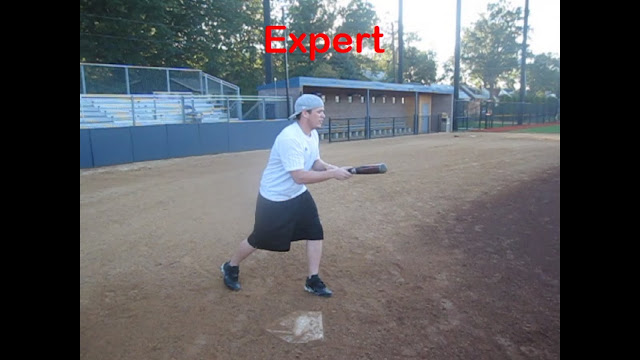Wednesday, September 22, 2010
Phase 2
Move your top hand about 12 or 13 inches up the bat and use thumb and index finger to hold the back part of the bat. (Make sure your not holding the bat all the way around with top hand or the ball could hit your fingers and break them) The hips slowly start to open up towards the pitcher, as well as the front foot everts toward the pitcher as well.
Phase 3
In this stage, your whole upper half is opened up, but your feet at still parallel with home, just twisted open toward the pitcher. Your bottom hand should now come up about 5 to 6 inches to make controlling the bat easier. Slightly bend both knees, at the knee joint, and bend the arms, at the elbow joint, about 90 degrees. The upper half of the body also starts to depress to get a better center of gravity.
Phase 4
In this phase, the only change is that once your back foot is turned, then you plant it into the ground (plantar flexion)more to give you a sturdier base.
Phase 7
To get ready for impact, flex the biceps brachii, brachialis, and triceps. The reason for this is because the bat needs to be firmly held when the ball hits it to make sure it goes far enough.To increase the odds of hitting the ball fair, in this phase you want to extend your arms so they are only flexed about 45 degrees. Also make sure to keep eyes on the ball at all times.
Phase 8
Notice that after contact, the bat moves backwards. The reason for this is because unlike a swing, you are not following through the ball. You simply want the ball to hit the bat, not hit the ball with the bat, thus the force of the ball should make the bat go slightly backwards after contact. The bat is only pointed down because this is after contact, so you have to release the bat.
Subscribe to:
Posts (Atom)







